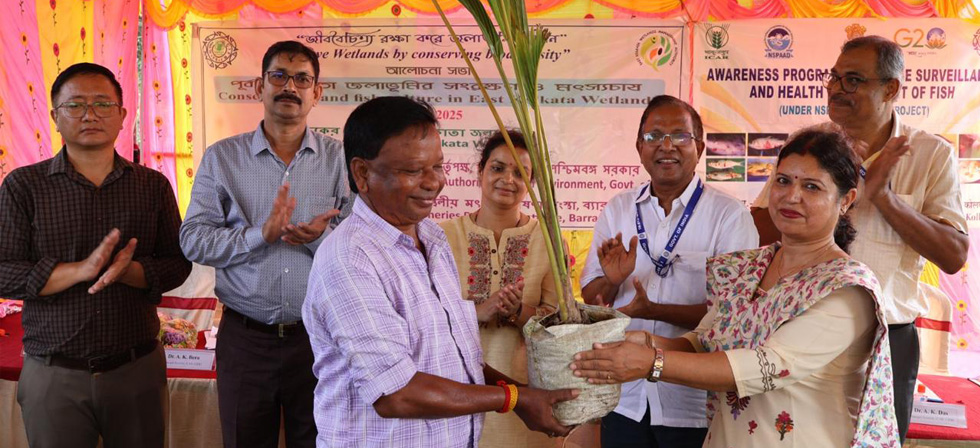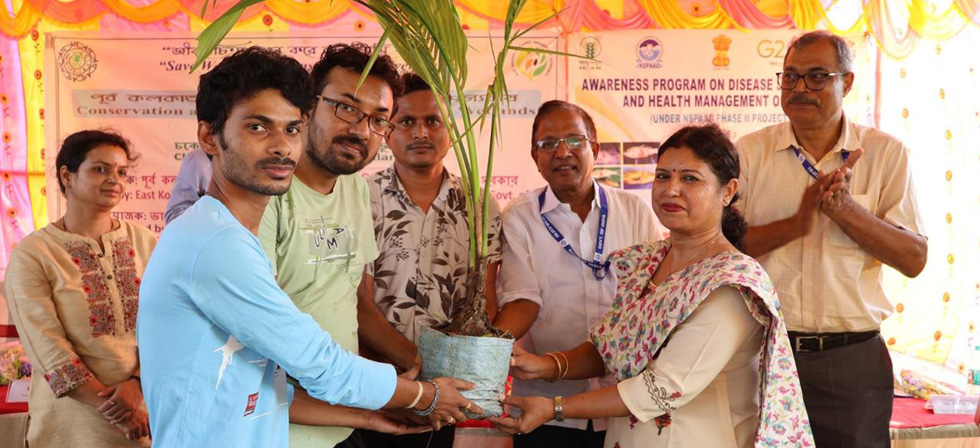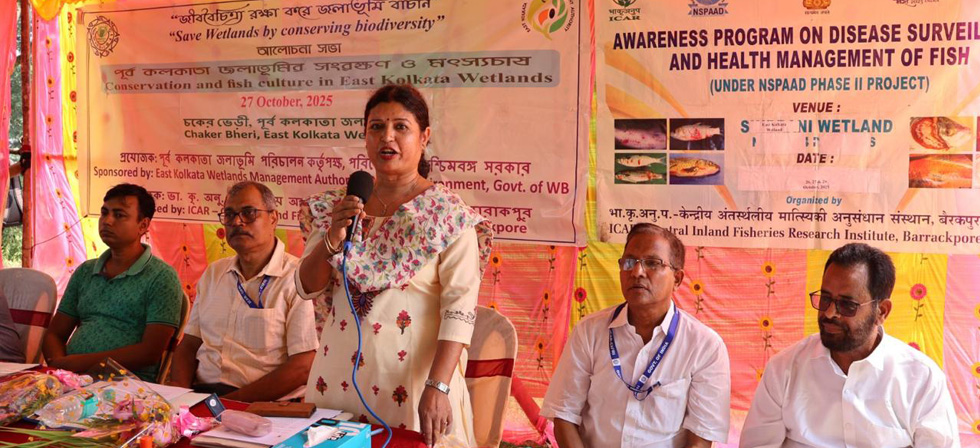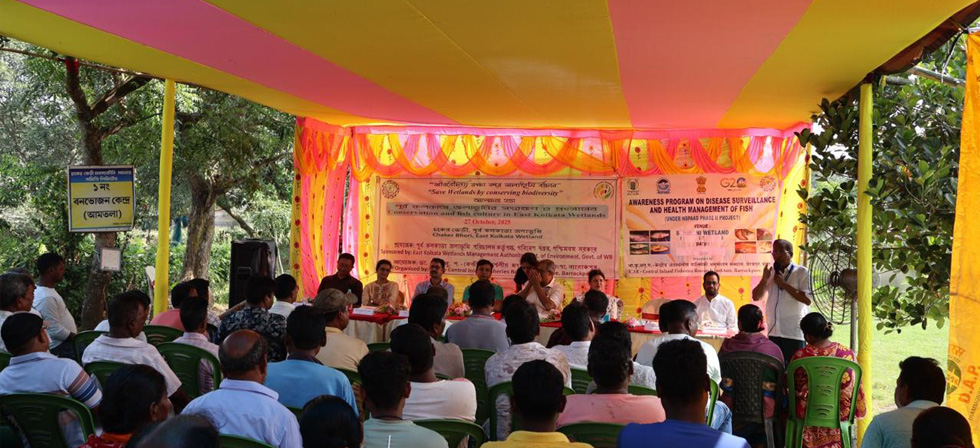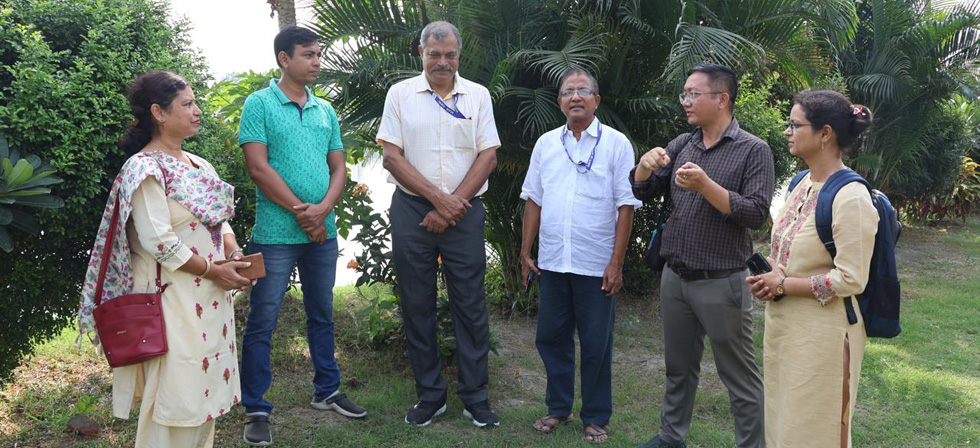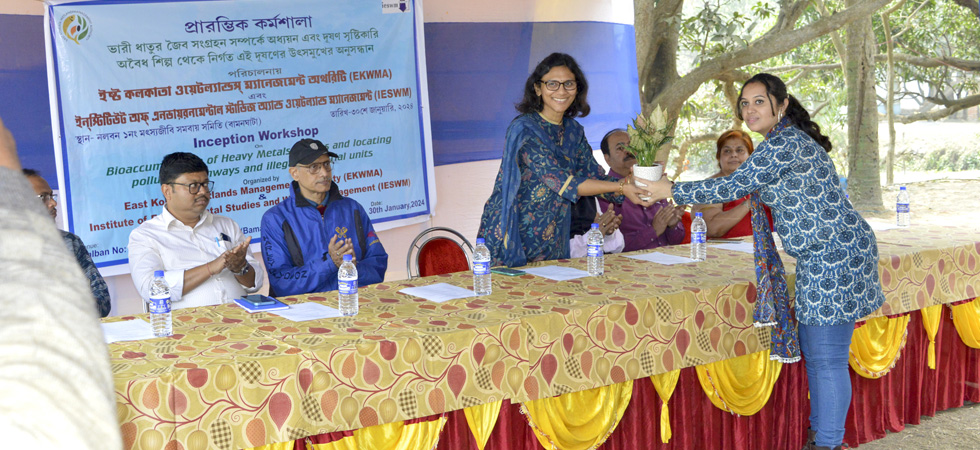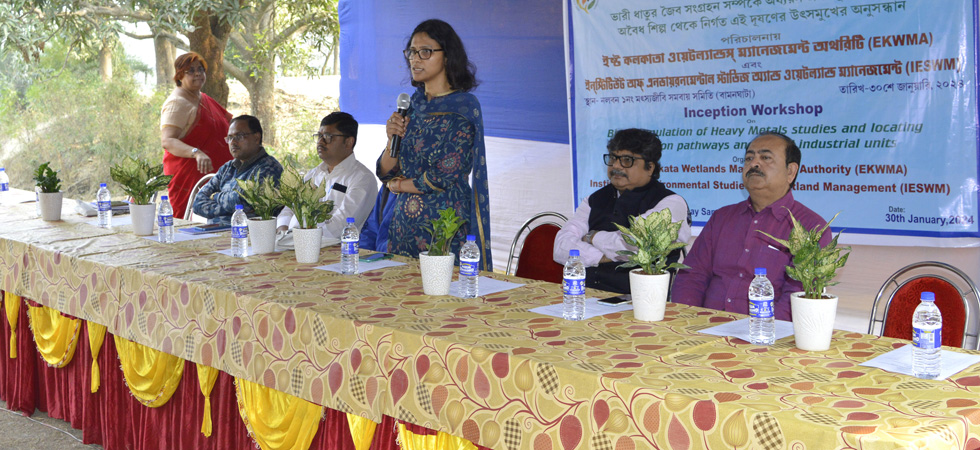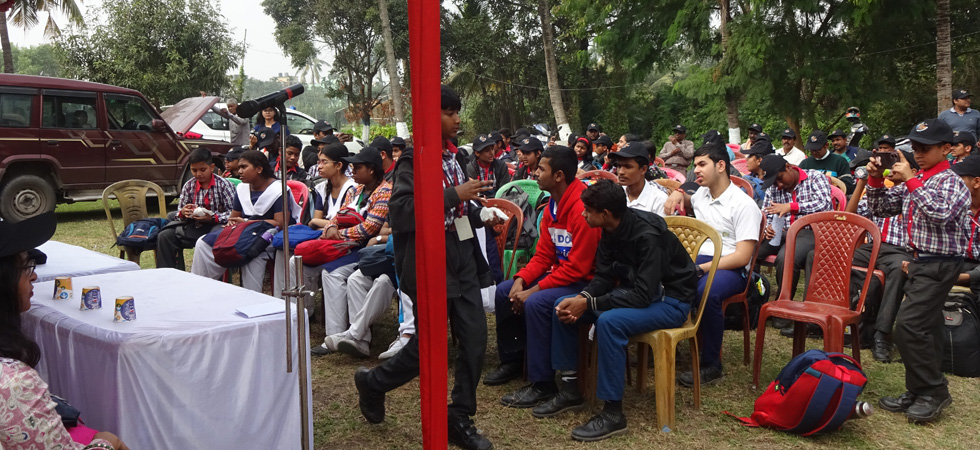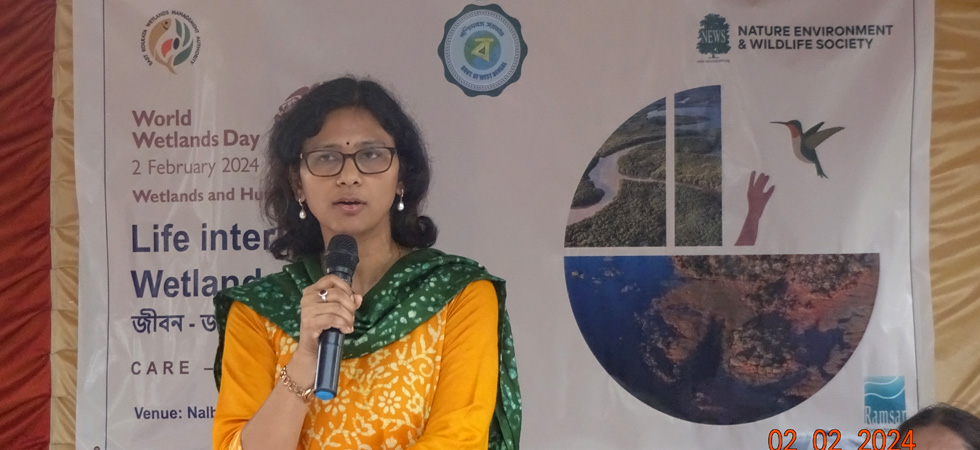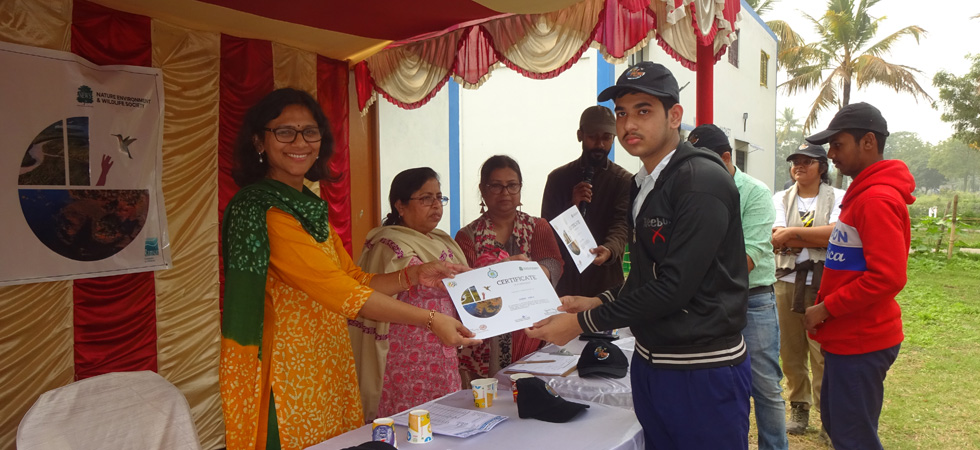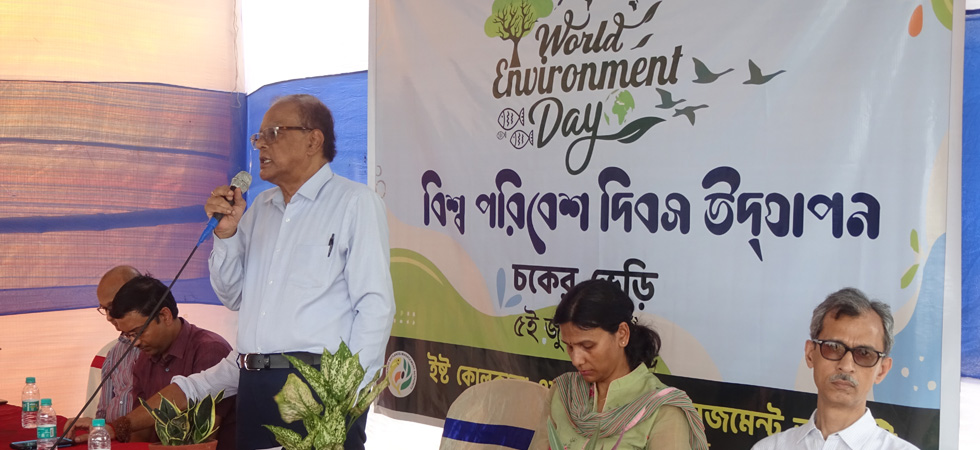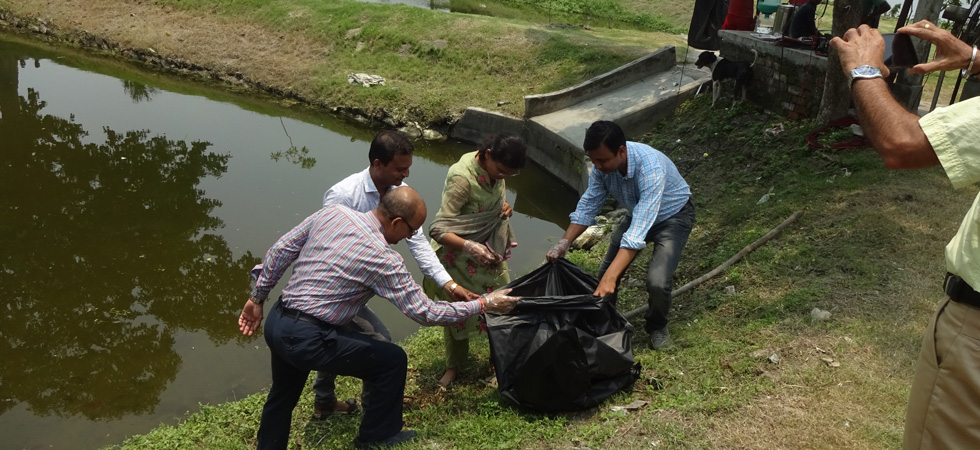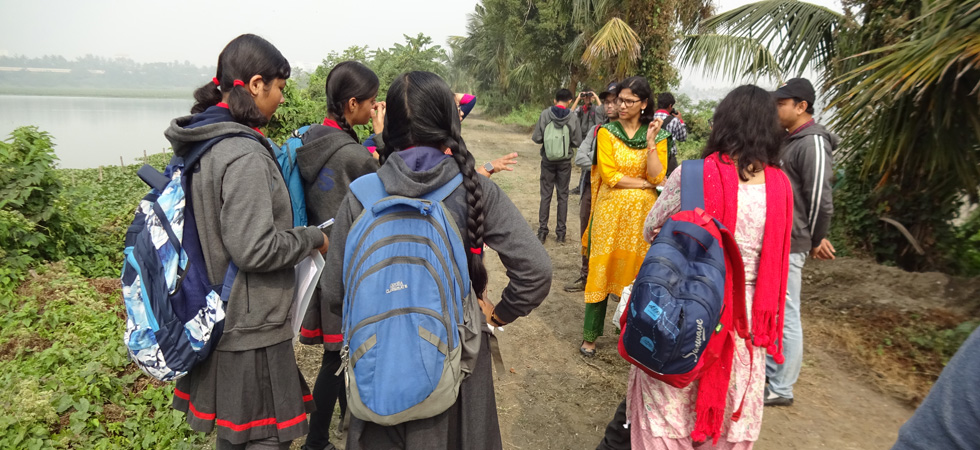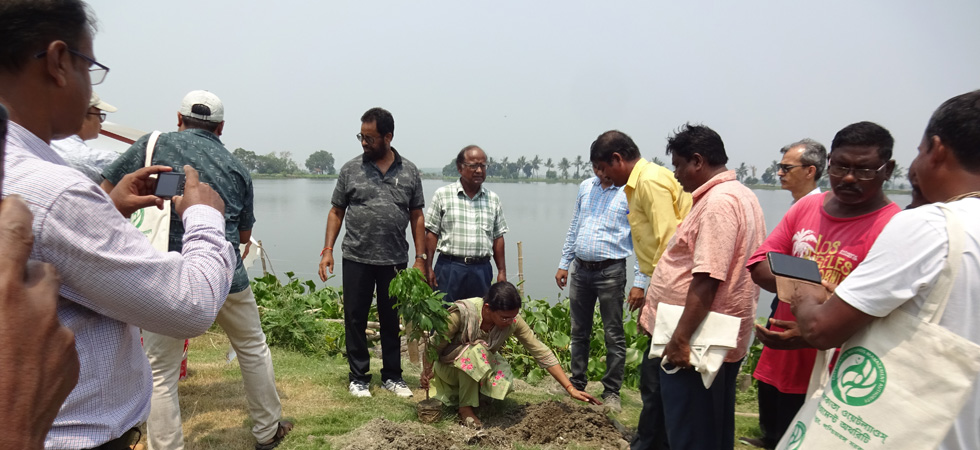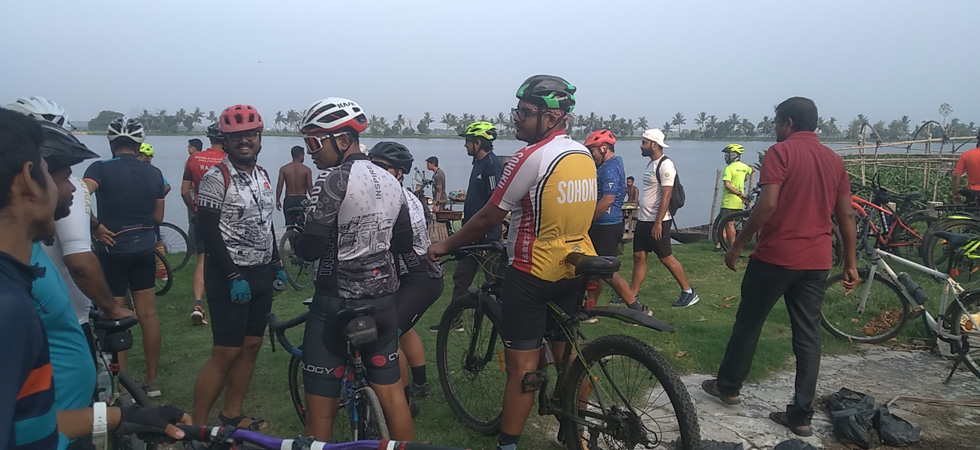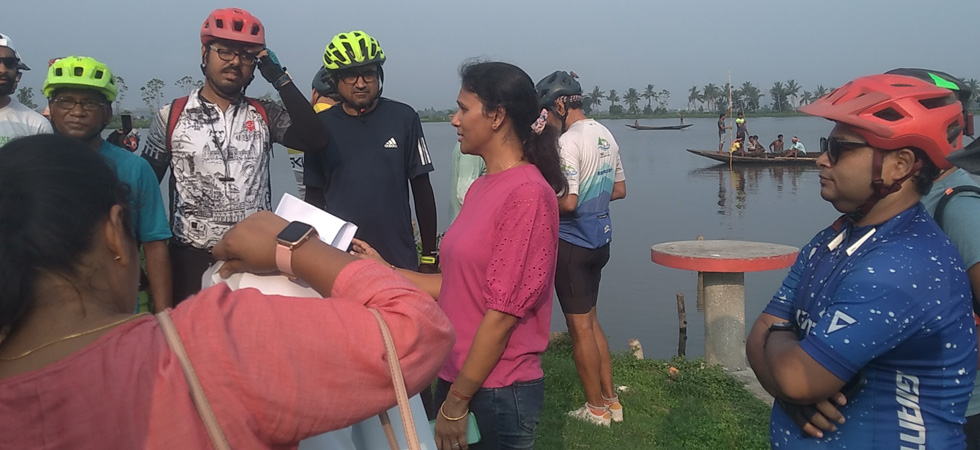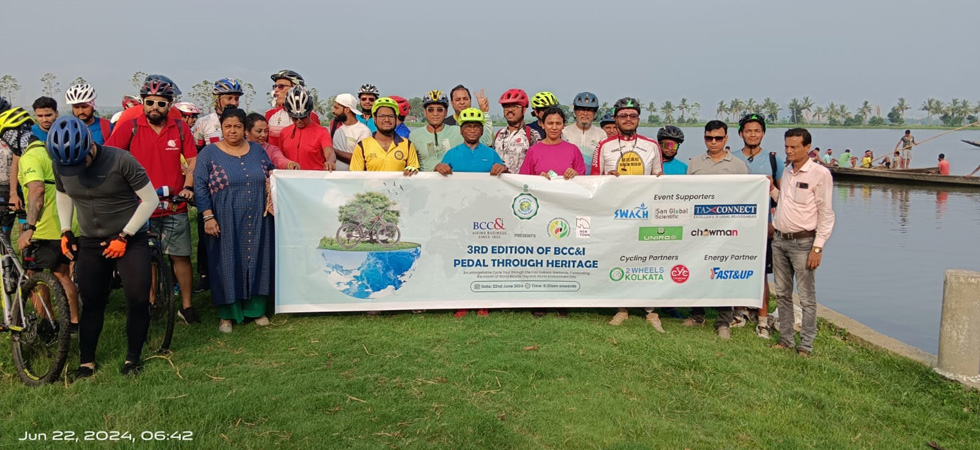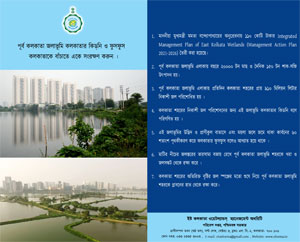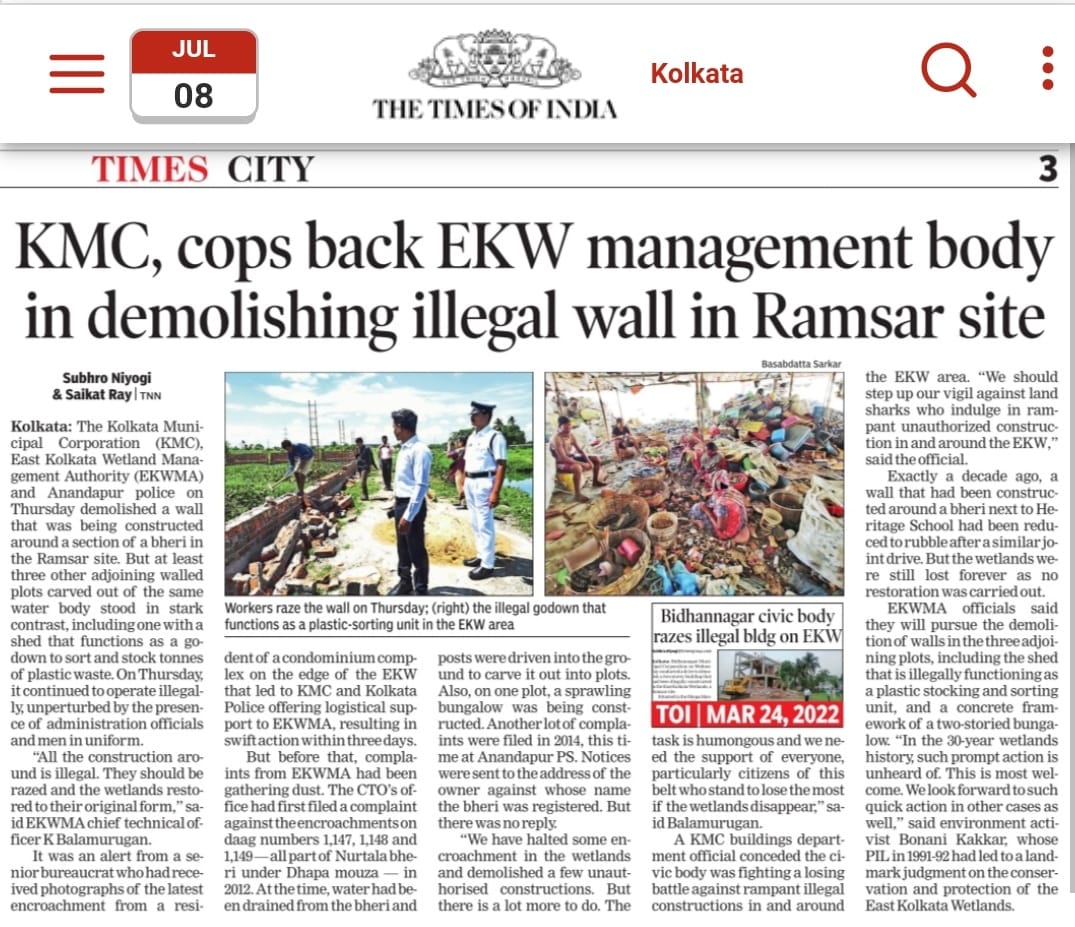

History & Chronology
| East Kolkata Waste Recycling Region A time-line | |
| Year | Event |
| 1775-1776 | Major William Tolly excavated the silted bed of Adiganga. |
| 1800 | Central Lake Channel and Beliaghata khal became abandoned |
| 1803 | Lord Wellesley noticed that drainage system of Kolkata is extremely defective |
| 1821 | On behalf of Lottery committee, Lt. Schalch, Engineer of Irrigation Dept., Bengal government, proposed to construct a masonry sewers |
| 1829-1833 | Excavation of Circular canal |
| 1830 | The Government of India wanted to reclaim the Salt Lake to expand cite. |
| 1833 | Construction of the Cossipore Lock. |
| 1840 | The Fever Hospital Committee reported that the main cause of the deterioration of public health was the poor drainage system |
| 1853 | Mr. William Clarck, Chief Sanitary Engineer, prepared a new detailed drainage scheme |
| 1857 | Mr. William Clarck’s plan of underground drainage system was accepted. |
| 1864 | A portion of the swampy area in the Salt Water Lake Region was acquired for dumping of garbage. |
| 1865 | A Salt Lake Reclamation Company offered to undertake the reclamation works. But due to financial problems it did not take place. |
| 1868 | The refuse was first time dumped |
| 1872 | A fish ghat was established and a channel was cut from Raja’s khal leading to this ghat. |
| 1874 | The fish market had been started successfully |
| 1876 | The dumping ground had been leased out to Nandalal Das for three years. |
| 1876 | The fishery had been leased out to Durga Charan Kundu for four year. |
| 30th April 1879 | Bhabanath Sen got the leas of whole land and water bodies for next 20 year |
| 1881 | A part of the leased land was acquired for works in connection with the storm water channel |
| 1882 | Construction of Dhapa Lock |
| 1884 | Underground city sewers were laid |
| 1887 | A new fish ghat, named Pagladanga, was established. |
| 1895-97 | Construction of Bhangor Canal |
| 1897 | Some additional land was acquired for Drainage work. |
| Bhangor Kata khal was excavated | |
| 1904 | It was noticed that 452 bigha out of 1658 bighas leased land were under cultivation (mainly garbage farming). |
| 1906 | A five-mile storm-water reservoir was excavated from Palmer Bazar to The Bidyadhari river at Bantala. |
| 1908-1910 | Krishnapur (kestopur) khal was excavated |
| 1929 | First time the commercial pisciculture was practiced by a private entrepreneur. |
| 1947 | After Independence a large no. of refugees were coming to Kolkata |
| 1947 | The actual development of Salt lake was started after the formation of the committee to examine the drainage problem. |
| 30th Jan. 1953 | A preliminary report presenting the general outlines to solve the problem of reclamation, was prepared |
| 1953 | The Government finalized the scheme known as Reclamation of Salt Lake Area. |
| 4th October 1956 | CPI criticized the Govt. decision to issue land acquisition notice for the proposed scheme at Bamanghata, Hatkhola area in 24 Parganas district. |
| February, 1957 | CPI again criticized the Govt.’s decision of city expansion in a mass meeting in Bamanghata. |
| 1959 | The team of WHO reviewed the complicated sanitation problem of Kolkata. |
| 16th June, 1959 | A meeting of the Fact Finding committee was held in which a resolution was adopted to place the question of feasibility before the high-level commission with judicial and technical experts. |
| 24th July,1959 | A Fact Finding committee consisting leading Congressmen and bheri owners approached the Secretary to the Chief Minister. |
| 9th September, 1959 | A Fact Finding committee consisting leading Congressmen and bheri owners submitted a memorandum recommending abandonment of the proposed reclamation plan the Chief Minister. |
| 1960-1961 | Some Planning decision has been taken place for Calcutta metropolitan district regarding water supply sewage drainage |
| 15th February 1961 | The preliminary works of reclamation was started. |
| 1961-1971 | The growth rate of the East Kolkata was 15.1% and the growth rate of the core Kolkata was 7.2%. |
| March, 1962 | The actual works of reclamation was started |
| 1965 | The Essential Commodities Act was formed. Following this Act The licensing system in pisciculture was introduced to control prices of fish. |
| 1966 |
The Traffic and Transportation Plan-16 (T.T.Plan) was formed. |
| Till 1968 | About 110 wagons of garbage was distributed daily. |
| 1969 | The contract with the Sen. family was expired. And the total land holding was taken over by C.M.C. |
| 1974 | The tipper truck and pay-loader vehicles replaced the system of railway. |
| 1978 | Though no major conversion took place, but more and more water bodies were transformed into rice fields. |
| 1980 | Few wetlands in the East Kolkata region were acquired for the construction of Eastern Metropolitan Bye-pass. |
| 1992 | A PIL was launched by Calcutta based NGO named PUBLIC against the proposed plan of converting 800 acres of land for the further extension of Salt Lake city and later for the construction of World Trade Center. The High Court Verdict delivered by Justice Umesh Ch. Banerjee showed the waste-recycling region of East Kolkata Area as the East Kolkata Wetland area. The High Court ruled that no development activity could take place without its prior permission. The map was later interpreted by Land and Land reforms department, and department of Environment, Govt. of West Bengal, in a government order that outlined 32 mouzas. |
| 2002 | East Kolkata wetland was finally declared as Wetland of International Importance by Ramsar Bureau. |
| 2005 | West Bengal Ordinance no. VII of 2005 The East Kolkata Wetlands (Conservation and Management )Ordinance, 2005 |
| Formation of East Kolkata Wetlands Management Authority | |
| 2006, January | Bill No. 2 of 2006 The East Kolkata Wetlands (Conservation and Management )Bill, 2006 |
| 2006, March | West Bengal Act VII of 2006 The East Kolkata Wetlands (Conservation and Management) Act, 2006 |
| 2008 | Management Plan for East Kolkata Wetlands |
